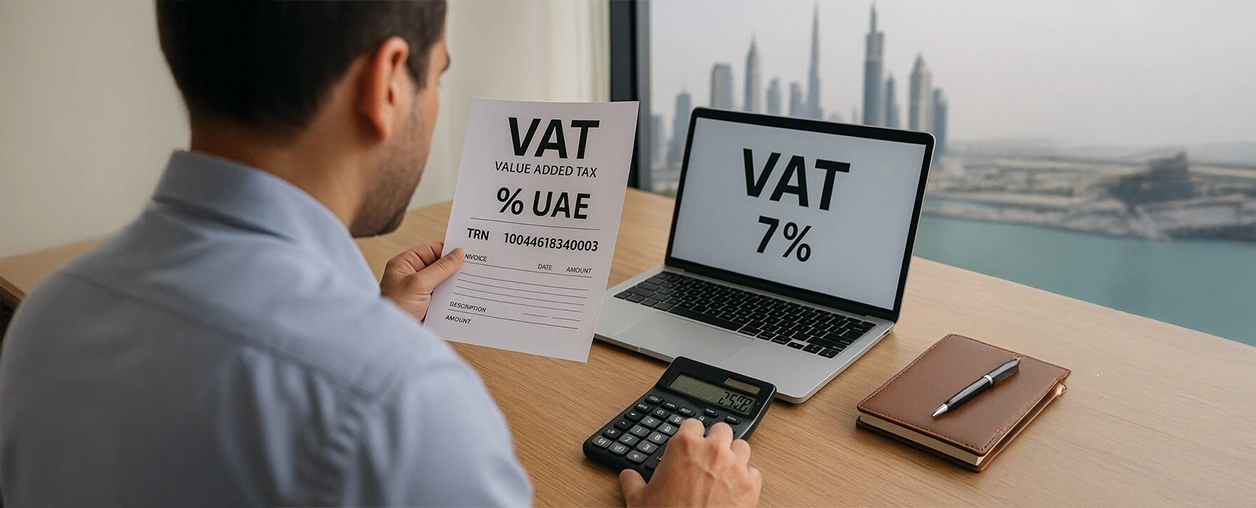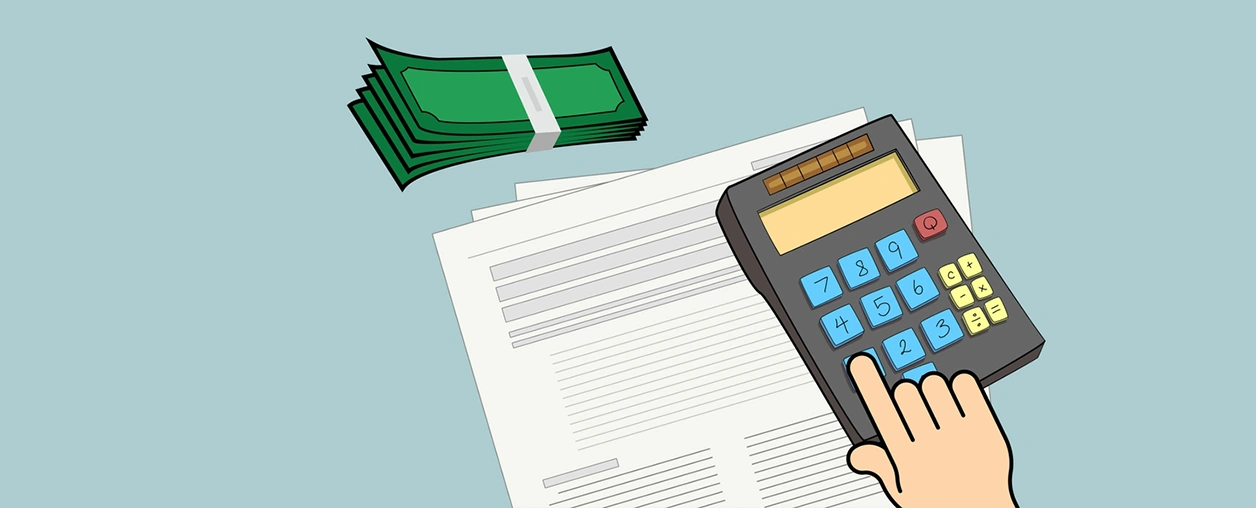The United Arab Emirates (UAE) started charging Value Added Tax (VAT) on January 1, 2018, with a standard rate of 5%. This tax was introduced to help the country earn money from different sources and not depend only on oil. VAT is a type of tax on spending added at each step in the supply chain, from making a product to selling it to the final customer.
All businesses in the UAE must register for VAT. If they do not, they could face big fines from the Federal Tax Authority (FTA). Since VAT affects all businesses and calculating VAT is something businesses do regularly, it is essential to understand how to calculate it correctly.
This blog shows how is VAT calculated so that businesses can stay compliant and manage their finances properly.
What is VAT (value added tax)?
VAT is a tax on goods and services that is added at each step of making and selling a product. This means that the buyer pays VAT, and the seller collects it. For example, when a manufacturer buys raw materials, VAT is added. Later, when the finished product is sold by a retailer to the customer, VAT is added again.
In the UAE, businesses collect VAT on behalf of the Federal Tax Authority (FTA). Today, over 150 countries around the world use the VAT system. To understand how VAT works, it helps to know these three main terms:
- Input VAT: It is the VAT a business pays when it buys goods or services. This amount can usually be claimed back.
- Output VAT: This is the VAT a business adds when it sells goods or services to its customers.
- VAT liability: This is the amount the business must pay to the FTA, calculated as: Output VAT – Input VAT.
Also Read: VAT vs. Corporate Tax in the UAE: What Every Business Owner Needs to Know
How to calculate VAT in UAE?
Use this simple VAT calculation formula to find out how to calculate VAT tax in the UAE:
VAT to pay = VAT on sales – VAT on purchases
Example for VAT on purchases (Input VAT):
If a business buys items worth AED 150 and the VAT rate is 5%, the VAT paid on this purchase is AED 7.50 (150 × 5%)
Examples of VAT on Sales (Output VAT):
If the business sells items for AED 300 at the same 5% VAT rate, the VAT collected from the customer is AED 15.00 ((300 × 5%).
Final VAT payable:
Subtract the VAT on purchases from the VAT on sales to find the VAT you owe:
AED 15.00 (Output VAT) – AED 7.50 (Input VAT) = AED 7.50 (VAT to be paid).
How to work out your VAT payment?
If you are registered for VAT, you can calculate how much VAT to pay by subtracting the VAT you paid on purchases (input VAT) from the VAT you collected on sales (output VAT).
Formula:
VAT to pay = Output VAT – Input VAT
Keep a record of both your input and output VAT for the tax period. Once you have those amounts, use the formula above.
If your output VAT is more than your input VAT, you will need to pay the difference. On the other hand, if your input VAT is more than your output VAT, you do not have to pay anything and may get a refund.
Typical VAT situations and examples
- Sales within the UAE: Most products and services sold in the UAE are charged 5% VAT.
- Selling goods outside the GCC: Exports to countries outside the GCC are taxed at 0% VAT. You do not charge VAT, but you can still claim back the VAT you paid on related expenses.
- Special free zone areas: Some free zones are treated as outside the UAE for VAT rules. In these areas, certain transactions are not subject to VAT.
VAT registration rules and responsibilities
- When you must register: If your business makes taxable sales over AED 375,000 in a year, you must register for VAT.
- Optional registration: If your sales are between AED 187,500 and AED 375,000, you can choose to register, but it is not required.
- What you need to do after registering: Once registered, you must keep proper records, file VAT returns every quarter and pay VAT on time.
Frequent VAT errors and tips to prevent them
- Mistakes in VAT calculation: Always use the right VAT rate and formula to avoid paying too much or too little.
- Wrongly categorizing sales: Not knowing the difference between exempt, standard-rated and zero-rated items can cause mistakes in VAT charges.
- Poor record keeping: Keep clear and complete records of all your sales and purchases to support your VAT reports and claims.
Fines for not following VAT rules
You may face heavy fines if you do not follow VAT rules. Some common mistakes include incorrect VAT return filing, registering late or not paying VAT on time. Penalties can start from AED 500 for small mistakes and go up to three times the VAT amount for serious issues.
How to manage VAT effectively
- Stay informed: Keep up with the latest VAT rules and updates from the FTA to avoid mistakes.
- Get expert help: Consider hiring VAT professionals or using accounting tools to ensure your VAT calculations are correct and you stay compliant.
- Keep good records: Do not forget to document all transactions properly. This is important for audits and to support your VAT claims.
Contact us today to get professional help with VAT calculation
Understanding how to calculate value added tax can be tricky, especially since it is a new tax in the UAE. However, if you want to avoid costly mistakes and penalties from the FTA, it is important to get accurate VAT calculations. Unsure about the numbers?
Do not worry! Our VAT experts at Asad Abbas & Co. Chartered Accountants are here to help. We help ensure your calculations are correct and your business stays compliant. So, what are you waiting for? Reach out to us today for assistance with VAT calculations!

 Go Back
Go Back








